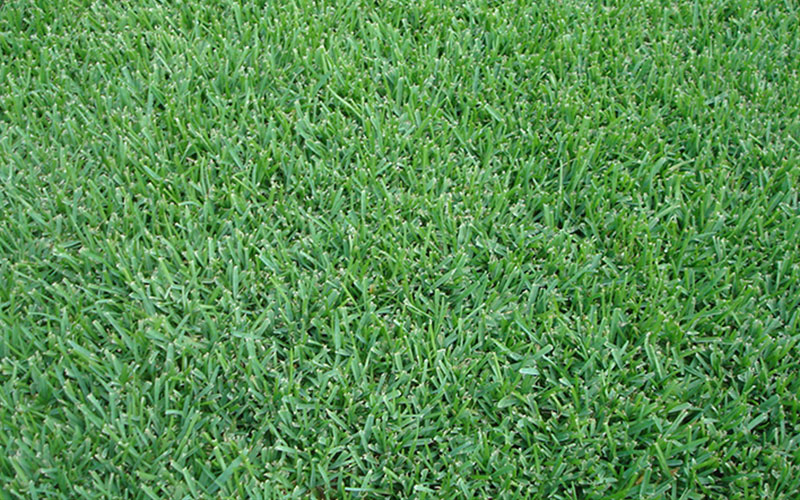Explore The FLORATAM SOD

Floratam is an improved St. Augustine grass that was released jointly in 1973 by the University of Florida and Texas A & M University. Floratam is the most widely produced and used St. Augustine grass in Florida. It is a coarse-textured cultivar that has poor cold and shade tolerance relative to other St. Augustine grass cultivars. It does not persist well in environments that receive less than 6 hours of sunlight daily. It grows vigorously in the spring and summer.
Learn More About FLORATAM SOD
Grass Watering
Irrigating on an “as-needed” basis is the best way to maintain any established, mature grass, as long as the proper amount of water is applied when needed.
Irrigation is needed when leaf blades begin to fold up, wilt, or turn a blue-gray color, or when footprints remain visible after walking on the grass.
Irrigation is needed when leaf blades begin to fold up, wilt, or turn a blue-gray color, or when footprints remain visible after walking on the grass.
Nutrient Management
As a general rule, the first fertilizer application of the year should be early April in Central Florida and mid-April in North Florida. In South Florida, fertilizer applications may be made throughout the year since growth is year-round.
University of Florida guidelines for lawn grass fertilization offer a range of fertilizer rates over which a particular species may be successfully maintained in the various regions of the state. These ranges account for the effect that localized microclimates can have on turf grass growth.
A range of rates allows for these environmental variations. An example of this would be a typical home lawn that is partially shaded and partially sunny. The grass growing in the shade needs less fertilizer than that growing in full sun.
University of Florida guidelines for lawn grass fertilization offer a range of fertilizer rates over which a particular species may be successfully maintained in the various regions of the state. These ranges account for the effect that localized microclimates can have on turf grass growth.
A range of rates allows for these environmental variations. An example of this would be a typical home lawn that is partially shaded and partially sunny. The grass growing in the shade needs less fertilizer than that growing in full sun.
Mowing Tip
Proper mowing practices are necessary to keep any lawn healthy and attractive. Standard Floratam grass cultivars (Bitter Blue, Classic, Floratam, etc.) should be maintained at a height of 3.5 to 4 inches.
Repeatedly mowing at lower heights increases the stress on the lawn, discourages deep rooting, increases the chance for scalping if a mowing event is missed or postponed due to weather, and may increase susceptibility to pest problems. Maintaining the right height helps the grass develop a deep root system and gives a better appearance to the turf.
No more than 1/3 of the leaf blades should be removed with any mowing. If possible, mowing height should be increased during periods of moisture stress or if the grass is growing in shade.
Repeatedly mowing at lower heights increases the stress on the lawn, discourages deep rooting, increases the chance for scalping if a mowing event is missed or postponed due to weather, and may increase susceptibility to pest problems. Maintaining the right height helps the grass develop a deep root system and gives a better appearance to the turf.
No more than 1/3 of the leaf blades should be removed with any mowing. If possible, mowing height should be increased during periods of moisture stress or if the grass is growing in shade.

